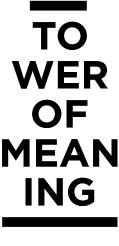15 abr 2014
Dancing on Narrow Ground: Youth & Dance in Ulster
"Dancing on Narrow Ground: Youth & Dance in Ulster, a documentary film about mid-90s Northern Ireland that shows a side of rave culture that's often alluded to, but rarely considered fully: did rave really bring everyone together? Or was that, again, a romantic scenario, quashed by the sociopolitical realities of daily life? Originally commissioned by Channel 4 but never aired on British TV, the film shows pre-Good Friday Agreement relations between young Catholics and Protestants; how rave presents a brief escapism from violence and sectarianism, gradually rendered bittersweet and, by the films close, seemingly futile. The concept was influenced by John T Davies' classic film on punk in Northern Ireland, Shell Shock Rock. This theme of punk providing a haven from the political conflict in Northern Ireland for young people has found expression more recently in the feature film Good Vibrations; a nostalgic and flawed take on punk in Northern Ireland. In any documentary film, you are on an emotional roller-coaster. As relations with the young ravers developed, I moved away from exploring a sociological thesis to an engagement with a very particular bunch of personalities. Filming took place in quite difficult production conditions, in what remained a dangerous time on the streets of Northern Ireland. A sort of duty of care emerged. We were not youth workers; you did fear for some of the young people we filmed, but you also need to maintain boundaries. In the end you are making a film, usually for a broadcast audience, and the job has to get done. Although, the film was never in fact broadcast in the end, as it trod on too many toes. Films like this are all about forging trust between film maker and subject, while at the same time recognising that each come from different locations.
The film maker is often more privileged than their working class subjects - a theme we explored in the film, in one bruising encounter.
Rave was probably the last subculture before the deluge of social media which in promoting individualism and celebrity has rather overwhelmed the sort of face to face, group, and street based cultures; where young people could explore their identities while remaining rooted in place, class and generationally generated forms of music, dress and social activity. And of course, now we are nostalgic about this loss of youthful energy.
The particular economic, social and political context of sectarianism in mid 90s Ulster is extremely potent and well documented, but focusing a film on this in the context of rave culture shows new sides of it all. Why do you think rave music and culture was popular in 90s Ulster?
The music was dance music and participative with no real stars. You danced 'till you dropped. The venues and the broader rave culture - the impromptu parties and events - provided a respite from sectarianism, a safe place to meet in a society scarred by violence.
The young people who participated contracted into this utopian place. As with a lot of youth cultures, the energy came from the margins and rave shrunk the distance between metropolis and periphery. Musical styles and favoured DJs travelled fast.
What was heard in Amsterdam one week could be heard in Belfast weeks later. And most importantly, it was yours - your music, your dance, your body, your friends - experienced uniquely.
It was always going to be a temporary respite from the problems of the "adult world": sectarian division, dead end jobs, a school system likely to fail you. After the heady excitement of the rave people had to go back to their divided communities, and to the constraints of working class life in Northern Ireland. The experience may have encouraged some young people to reach out towards a political settlement that would tackle sectarianism. Sadly, that's not what they got; as the current settlement has entrenched sectarian divisions rather than removed them, we're still stuck with the same shower of political bigots ruling us.
Rave brought temporary release from the pressures of living in a sick society, some of that release being drug induced - and so there were casualties. Some of the young people we worked with developed serious drug habits, lived on the wrong side of the law and died early. For most, the rave experience was formative and was mind expanding…. although the transition to adult life in a society of constraint could be difficult.
Perhaps you finding this film will lead to a reunion of the rave crowd. Who knows - I'm up for it. Many of the former ravers are in communication with each other still. The film is a sort of family album, all be it with a political message tucked into it.
Suscribirse a:
Enviar comentarios (Atom)


0 comentarios:
Publicar un comentario